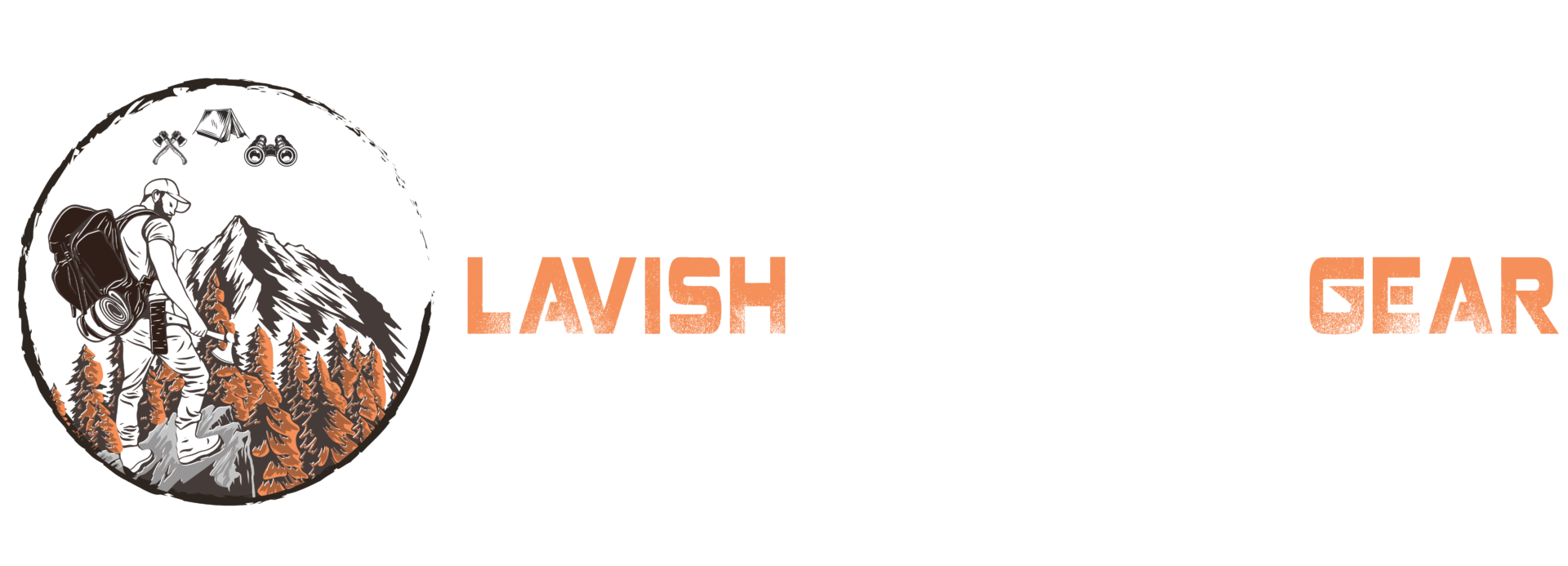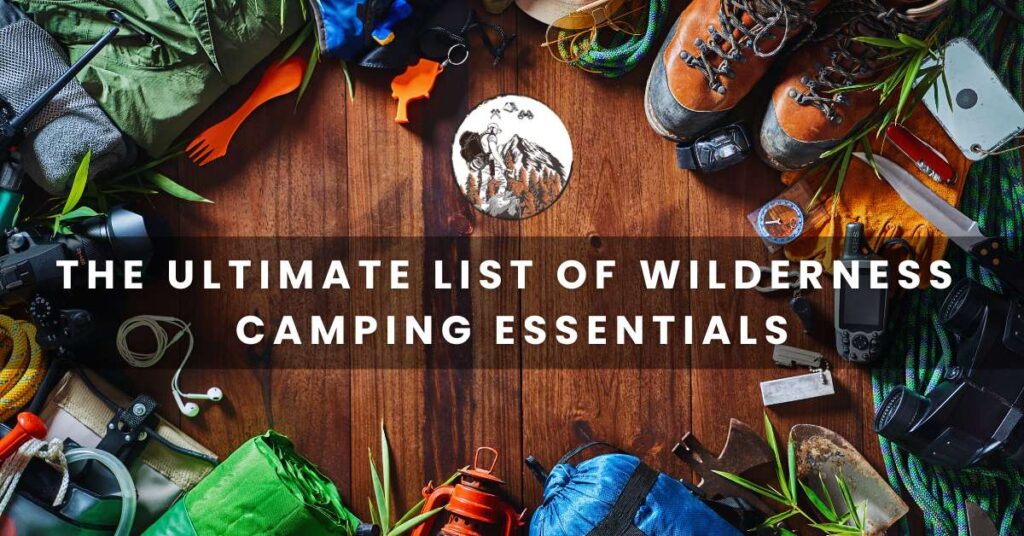To camp in the wild successfully, you must have wilderness camping essentials. Take a deep breath and get ready for an incredible journey, where nature is your classroom. Survival in wild places requires preparation, but don’t let this intimidate you; we’ve got you covered! Check out our ultimate list of essential gear that will ensure a safe and enjoyable experience on each hike.
Whether you’re preparing for day trips or multi-day excursions, these tips are sure to give you confidence as a camper while mastering the recipe for success when venturing into unexplored places. Get ready for great memories and even better stories–it’s time to explore what wilderness camping has in store!
Table of Contents
Must-have Wilderness Camping Essentials
When packing for your wilderness camping trip, it’s crucial to have the right gear with you. These essentials are the building blocks that will keep you safe and comfortable during your journey. Here are the must-have wilderness camping essentials that you should never leave behind:
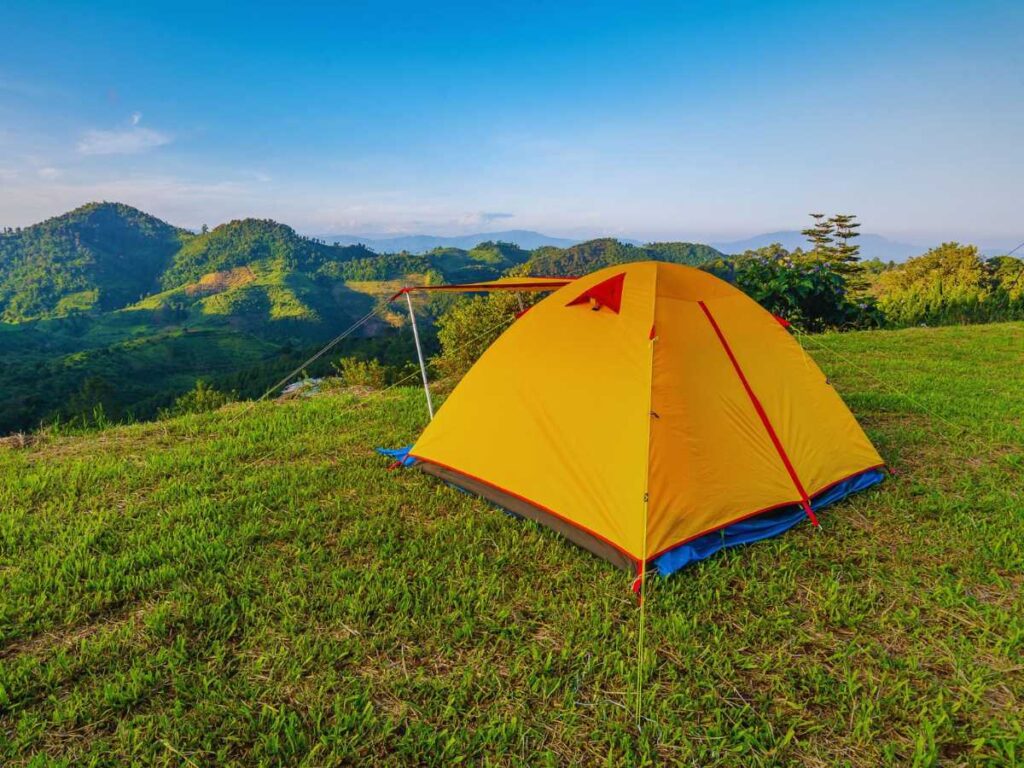
Tent
A reliable and sturdy tent is essential for any camping trip. It will provide shelter from rain, wind, or sun while giving you a comfortable place to sleep at night. Choose a lightweight tent if you’re planning on backpacking and make sure it’s waterproof. There are different types of camping tents and we have made a thorough guide for you on “Types of Camping Tents“, you may dive into it.
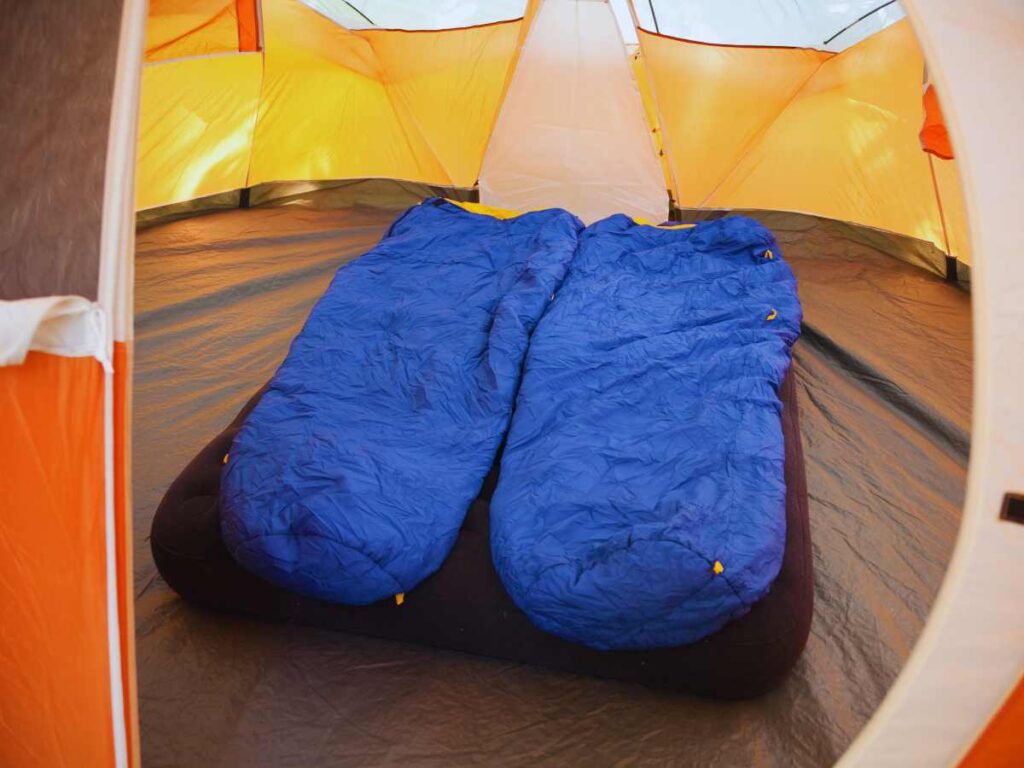
Sleeping Bag
A good quality sleeping bag is essential for a comfortable night’s sleep in the wilderness. It will keep you warm and cozy, even on chilly nights. Make sure to choose a sleeping bag suitable for the climate you’ll be camping in.

Sleeping Pad
Sleeping pads are designed to provide insulation from the cold ground and add an extra layer of comfort while sleeping. They come in various sizes and thicknesses, so make sure to choose one that fits your needs.
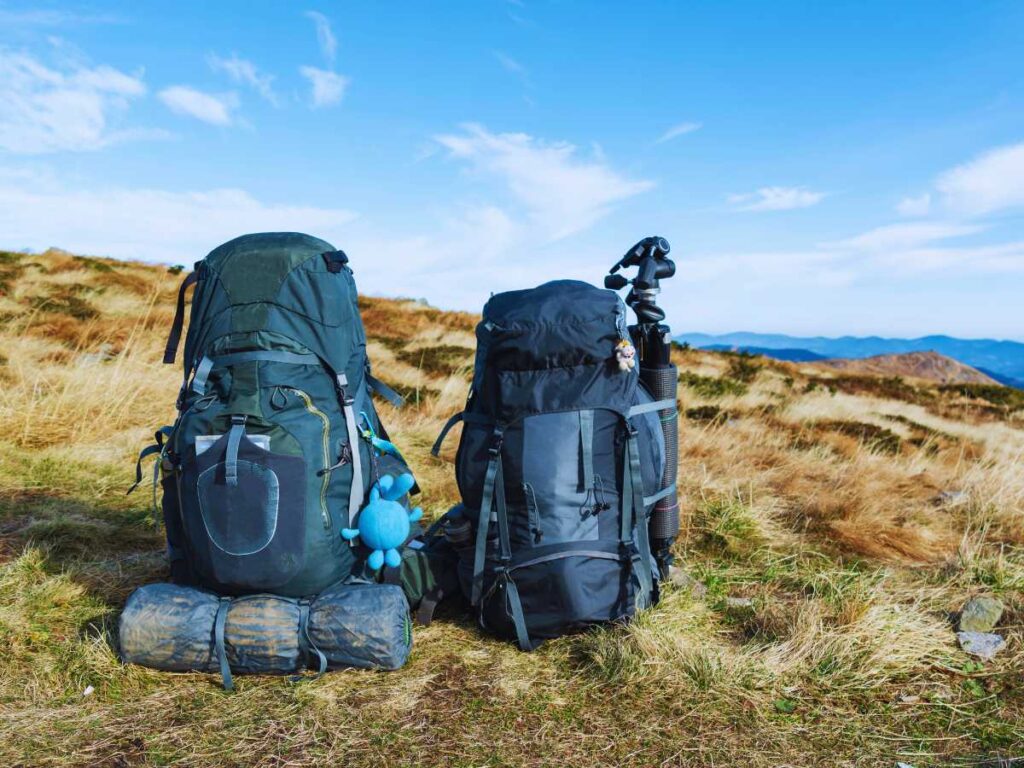
Backpack
Your backpack will be your best friend during your wilderness camping trip. It should be sturdy, comfortable to carry, and able to hold all of your gear. Choose a backpack with multiple compartments for easy organization.

Water Filtration System
Staying hydrated is crucial while camping, and having a reliable water filtration system is essential. You can invest in a portable water filter or bring purification tablets to ensure you have access to clean drinking water.
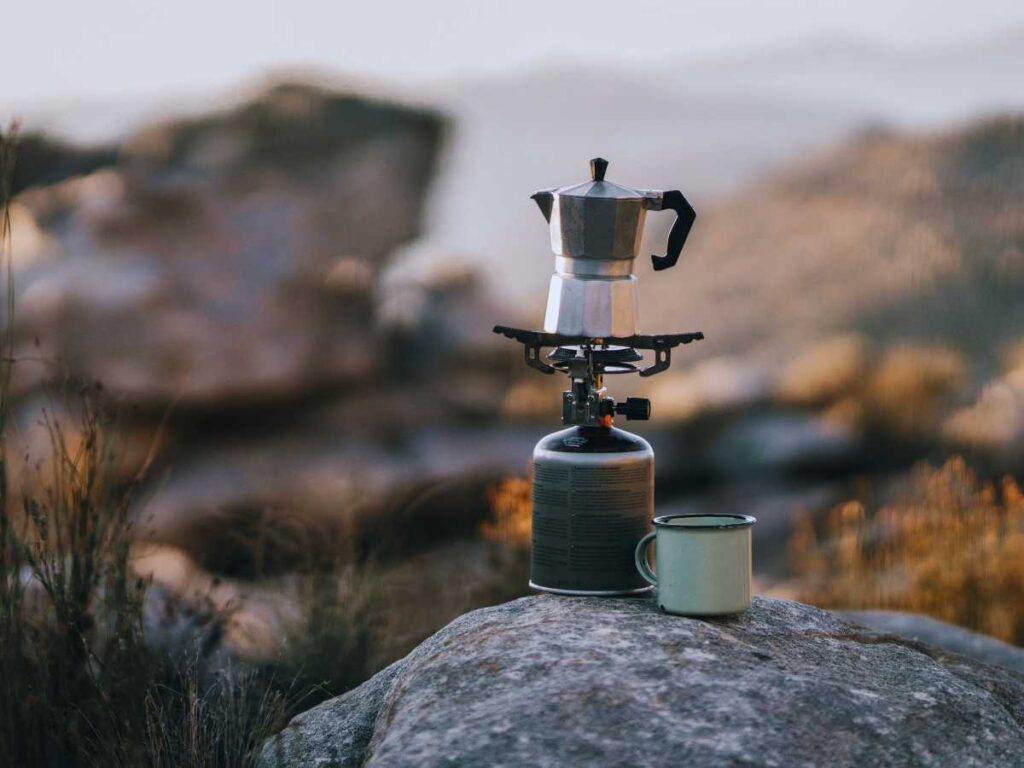
Portable Stove
Cooking meals over an open fire may sound ideal, but it’s not always possible in the wilderness. A portable stove will come in handy when cooking food and boiling water for drinking.

First Aid Kit
Accidents can happen, even in the wilderness. A well-stocked first aid kit is an essential item to have with you on any camping trip. It should include items such as bandages, antiseptic wipes, and pain relievers.

Map and Compass
Although most people rely on electronic devices for navigation, it’s always a good idea to have a physical map and compass with you. Familiarize yourself with the area before heading out and use these tools as backups. When heading into the wild you must have basic navigation skills, it’s a lifesaver and we have got you covered by providing this ultimate guide to “Navigation Skills“.
Matches or Fire Starter
Pack a waterproof container of matches in case you need to start a fire, matches can be convenient and easy to use. You can use a fire starter and it can be more reliable in various weather conditions but you may need additional tools like a striker or lighter for ignition.
Hiking Boots
Comfortable, sturdy hiking boots are a must for any wilderness camping trip. Be sure to break them in before you go to avoid blisters.
The Extras: Additional Wilderness Camping Essentials
While the above items are considered essential for any wilderness camping trip, there are a few additional items you may want to consider bringing along for added comfort and convenience:
Headlamp/Flashlight
A headlamp or flashlight is essential for navigating in the dark or during early morning hikes. Make sure to bring extra batteries as well.
Insect Repellent
Don’t let pesky bugs ruin your camping experience. Bring insect repellent to keep them at bay.
Sun Protection
Protect your skin from the sun’s harmful rays by bringing along sunscreen, a hat, and sunglasses.
Multi-purpose Tool
A multi-purpose tool such as a Swiss Army Knife can come in handy for various tasks while camping.
Extra Clothing
Always be prepared for changing weather conditions by packing extra layers of clothing, including rain gear.
Duct Tape
Duct tape is a versatile item that can be used for quick fixes and repairs in the wilderness. It’s lightweight and doesn’t take up much space, so it’s worth bringing along.
Packing Tips for Wilderness Camping Essentials
Now that you know the must-have essentials for your wilderness camping trip, here are some packing tips to help you make the most out of your gear:
- Make a checklist: Before each trip, create a checklist of all the essential items you’ll need. This will ensure you don’t forget anything important.
- Pack light: When backpacking, every ounce counts. Choose lightweight options for your gear and only pack what is necessary.
- Keep things organized: Use packing cubes or dry bags to keep your gear organized in your backpack. This will make it easier to find what you need without unpacking everything.
- Test your gear beforehand: Make sure to test out your gear before heading into the wilderness. This will give you time to fix any issues and get comfortable using them.
- Don’t forget the small items: It’s easy to overlook small items like matches or a headlamp, but these can make a big difference in your camping experience. Make sure to pack them in a designated spot in your backpack.
Pack enough food and water for your needs
It’s important to pack enough food and water for your camping trip, but also remember to bring some extra in case of emergencies or unexpected delays. Plan out your meals and snacks ahead of time to avoid packing too much or not enough.
Consider bringing a first aid kit with medical supplies
While a basic first aid kit is necessary, it’s also important to consider any specific medical needs you or your fellow campers may have. Pack any necessary medications and supplies in case of emergencies.
Invest in good quality rain gear to stay warm and dry
Weather can be unpredictable in the wilderness, so it’s crucial to pack proper rain gear to stay warm and dry. Look for lightweight options that are water-resistant and breathable.
Make sure you have proper clothing layers for changing weather conditions
Pack clothing layers that can be easily added or removed depending on the weather. This will keep you comfortable and prepared for any temperature changes.
Bring insect repellent to ward off bugs and insects
Insects can be a nuisance while camping, so make sure to pack insect repellent to keep them away. Look for natural options that are safe for both you and the environment.
Stash an extra set of clothes and shoes in case you get wet
It’s always a good idea to have an extra set of clothes and shoes in case you get wet while camping. This will keep you comfortable, and warm, and prevent any potential health issues.
Bring a garbage bag to pack out all your trash
As responsible campers, it’s important to leave no trace behind. Bring a garbage bag with you to dispose of waste properly to protect the environment. Bring biodegradable soap and dig a hole at least 6 inches deep to dispose of any human waste. Also, make sure to properly dispose of any garbage or food scraps.
How to Choose the Right Camping Gear
When it comes to wilderness camping, choosing the right gear can make or break your trip. Here are some tips to help you select the best equipment for your needs:
- Do your research: Before making a purchase, do thorough research on different brands and read reviews from other campers.
- Consider durability: Invest in high-quality gear that will last through multiple trips. This may mean spending a bit more upfront, but it will save you money in the long run.
- Choose lightweight options: As mentioned before, every ounce counts when backpacking. Look for gear that is both durable and lightweight.
- Test out different options: Don’t be afraid to try out different brands and styles to find what works best for you. What works for one person may not necessarily work for another.
- Think about the weather: Choose gear that is suitable for the season and climate you will be camping in. For example, a four-season tent is necessary for winter camping, you can further check out our guide to “Winter Camping Essentials“, whereas a three-season tent may suffice for summer trips.
- Consider multi-functional items: Look for gear that can serve multiple purposes to save space and weight in your backpack.
- Don’t forget about comfort: While functionality is important, don’t overlook comfort. Make sure to test out sleeping bags, pads, and other gear for optimal comfort before purchasing them.
- Factor in your budget: While it’s important to invest in quality gear, also keep your budget in mind. There are many affordable options that still offer good quality.
Tips for Staying Safe while Camping in the Wilderness
When you’re camping in the wilderness, it’s important to remember that you’re not simply enjoying a nature hike — you’re living in the wilderness, which means that there are some important safety considerations to keep in mind. Here are a few tips to help you stay safe while camping in the wilderness:
- Let someone know where you’re going: Before you head out into the wilderness, make sure to let someone know where you’re going and when you expect to return. This is important in case something happens and you need to be located.
- Bring the essentials: When you’re packing for your trip, make sure to bring along all of the essential items that you’ll need, including food, water, shelter, and clothing. It’s also a good idea to bring a first-aid kit and a flashlight.
- Be prepared for emergencies: When you’re camping in the wilderness, it’s important to be prepared for emergencies. Make sure you know how to start a fire, how to purify water, and how to signal for help if necessary. It’s also a good idea to bring a satellite phone or two-way radio in case of emergency.
- Know your limits: When you’re camping in the wilderness, it’s essential to know your limits and plan accordingly. Don’t push yourself too hard — if you need help, don’t be afraid to ask for it.
With these tips in mind, you can enjoy your camping trip safely in the knowledge that you’re prepared for anything that might come your way.
How to Find the Perfect Campsite
Choosing the right campsite can greatly enhance your wilderness camping experience. Here are some tips for finding the perfect spot:
- Look for flat, dry terrain: This will make setting up your tent and sleeping more comfortable.
- Consider proximity to water sources: Having a nearby water source is not only convenient for drinking and cooking, but it also provides opportunities for activities like fishing or swimming. Just make sure to properly treat the water before consuming it.
- Check for protection from the elements: Look for areas with natural shelter, such as trees or rock formations, to protect you from wind and rain.
- Take note of potential hazards: Avoid areas with unstable terrain, dead trees, or potential for flash floods.
- Be respectful of camping regulations: Make sure you are allowed to camp in the area and follow any rules or restrictions.
- Consider the scenery: Choose a spot with beautiful views to enhance your camping experience.
Once you’ve found a safe and responsible spot, you can start to think about things like how to level the ground or how close you are to water. Ultimately, the perfect campsite meets all of your needs and leaves minimal impact on the surrounding area. You may explore “How to Set Up a Camping Tent“.
What to do if you Get Lost in the Wilderness
Even with proper preparation and precautions, getting lost in the wilderness can happen. Check out and learn the “Navigation Skills“. Here are some steps to take if you find yourself in this situation:
- Don’t panic: Panicking will only make the situation worse. Take a deep breath and assess your surroundings.
- Stay put: If you’re not able to find your way back, it’s important to stay where you are. Moving around can make it more difficult for search and rescue teams to find you.
- Make yourself visible: Use bright-colored clothing or a whistle to signal your location to potential rescuers.
- Stay warm and hydrated: Drink plenty of water, conserve energy and seek shelter if possible. Keep yourself warm with extra layers or by building a fire if necessary.
- Use navigation tools: If you have a map and compass, try to use them to navigate your way back. If you have a satellite phone or emergency beacon, use it to call for help.
- Remain calm and stay positive: It’s important to keep a clear mind and remain optimistic in order to make good decisions in a difficult situation.
If you don’t have a map or compass, look around for landmarks that might help you orient yourself. If there are no obvious landmarks, try to find a high point from which you can get a good view of the surrounding area.
Once you have an idea of where you are and what the best route back might be, begin walking in that general direction. If possible, walk in a straight line; if not, make sure to remember any turns you make so that you can backtrack if necessary.
If you still cannot find your way back after walking for some time, it may be best to set up camp and wait for rescuers to find you. Make sure to build a fire and signal for help in any way possible.
How to Build a Shelter in the Wilderness
Building a shelter is one of the most important things you can do when you’re camping in the wilderness. A shelter will protect you from the elements and provide you with a place to rest. It’s important to know how to build a shelter before you go on your trip so that you can be prepared in case of an emergency.
There are a few different types of shelters that you can build in the wilderness, depending on the materials that you have available. The most important thing is to make sure that your shelter is sturdy and will protect you from the elements.
One type of shelter that you can build is a debris hut
This type of shelter is made by piling up leaves, sticks, and other debris to create walls and a roof. Debris huts are not as sturdy as other types of shelters, but they can be helpful in an emergency.
Another type of shelter that you can build is a tarp shelter
A tarp shelter is made by suspending a tarp between two trees or other support structures. Tarp shelters are more sturdy than debris huts, but they require more materials to build.
If you have a tent, you can also set up your tent in the wilderness as a form of shelter. Tent camping is more comfortable than sleeping in a debris hut or tarp shelter, but it requires more effort to set up camp.
No matter what type of shelter you choose to build, it’s essential to make sure that your shelter is large enough for all of your gear and supplies. You should also make sure that your shelter is well-ventilated to prevent moisture buildup inside.
How to Find Food and Water in the Wilderness
In the wilderness, food and water sources may not be as easily accessible as they are in more urban areas. Here are some tips for finding sustenance during your camping trip:
- Know how to identify edible plants: Before your trip, educate yourself on the types of plants that are safe to eat in the area you will be camping in. Familiarize yourself with their appearances and any lookalike plants that may be dangerous.
- Bring a water filtration system: This will allow you to safely drink from natural water sources such as rivers or streams.
- Look for animal tracks and signs: Following animal tracks can lead you to sources of water, and certain animals can provide food if necessary. Just make sure to research proper hunting and fishing regulations in the area.
- Dig for water: If you are unable to find a natural water source, digging a hole and waiting for it to fill with rainwater or melting snow can provide you with clean drinking water.
- Collect morning dew: Placing leaves or clothing out overnight can collect morning dew, providing a small amount of moisture that can be consumed.
- Bring non-perishable food items: It’s always a good idea to pack some emergency food supplies, such as energy bars or dehydrated meals. This will provide nourishment in case you are unable to find natural sources of food.
Remember to prioritize safety when it comes to finding sustenance in the wilderness. Never eat anything unless you are 100% certain it is safe to do so. It’s always better to err on the side of caution and continue searching for food and water sources.
How to avoid Wilderness Camping Hazards
While wilderness camping can be a thrilling and rewarding experience, it’s important to be aware of potential hazards that may arise. Here are some ways to avoid common dangers while camping in the great outdoors:
- Prepare for harsh weather conditions: Bring proper gear and clothing to withstand any extreme temperatures, rain, or wind. Check weather forecasts before your trip and plan accordingly.
- Keep a safe distance from wildlife: Wild animals can be unpredictable and dangerous. Make sure to properly store food and garbage to avoid attracting them to your campsite.
- Be mindful of fire safety: Always follow proper fire safety protocols when building a campfire, and make sure to fully extinguish it before leaving your site or going to bed.
- Avoid unstable terrain: Stick to designated trails and be cautious when hiking in unfamiliar areas. Avoid steep or slippery slopes that could result in injury.
- Stay hydrated and take breaks: Don’t push yourself too hard while hiking or exploring. Remember to drink plenty of water, rest often, and listen to your body’s needs.
Some of the most common hazards associated with wilderness camping include
- Hypothermia: occurs when your body loses heat faster than it can produce it, causing a drop in body temperature. Symptoms include shivering, confusion, slurred speech, and drowsiness. If left untreated, hypothermia can lead to coma and death.
- Dehydration: occurs when your body doesn’t have enough fluid to function properly. Symptoms include thirst, fatigue, lightheadedness, and dark-colored urine.
- Sunburn: is a major hazard for campers spending time outdoors. Symptoms include redness, pain, swelling, and blistering of the skin. Severe sunburn can lead to dehydration and heat exhaustion.
- Insect Bites and Stings: are common in areas where there are large populations of mosquitoes, ticks, and other pests. Symptoms range from mild irritation to severe allergic reactions that can be life-threatening.
- Animal Attacks: are rare but can occur if you encounter a wild animal that feels threatened. Bears, mountain lions, and wolves are some of the animals that have been known to attack humans. Symptoms of an animal attack vary depending on the type of animal involved but can include puncture wounds, lacerations, and crush injuries.
By being prepared and aware of potential hazards, you can minimize risks while wilderness camping and have a safe and enjoyable experience. Always prioritize safety and make responsible decisions while exploring the beauty of nature. With the right mindset, gear, and knowledge, you can create unforgettable memories in the great outdoors with confidence and peace of mind.
Conclusion
To have a successful trip, it’s important that you must-have these wilderness camping essentials, knowledge, and mindset. Building a shelter, finding food and water sources, and avoiding hazards are all essential skills for wilderness camping. Furthermore, you can also go through our detailed guide to “Backpacking Essentials“, if you like going on backpacking trips.
By following these tips and prioritizing safety, you can create unforgettable memories in the great outdoors. So pack your essentials, lace up your boots, and embark on a journey into the wild – just remember to leave no trace and always respect the environment.
Do you guys know that there are different types of camping and we have got you covered with the detailed guide on “17 Different Types of Camping”, so you may explore it! Please keep supporting us as it motivates us to bring valuable content and information for adventure lovers!
Happy camping!
Faq
Q. What are the most important items to bring on a wilderness camping trip?
Essential items for a wilderness camping trip include a shelter, sleeping gear, clothing and footwear, a first aid kit, cooking supplies, a flashlight or headlamp, water bottles, and a map and compass. Basic tools and emergency supplies are also recommended.
Q. What precautions should I take to stay safe while wilderness camping?
To stay safe while wilderness camping, be prepared for the weather, follow Leave No Trace principles, let someone know your plans, bring a map and compass, and be aware of hazards. Know how to respond in an emergency.
Q. What is the purpose of a sleeping pad in wilderness camping?
A sleeping pad provides insulation from the cold ground and adds comfort while sleeping, varying in size and thickness.
Q. Why is it recommended to have a map and compass for wilderness camping?
Having a physical map and compass as backups is essential for navigation in case electronic devices fail, ensuring you stay on course.
Q. Why should I bring a headlamp or flashlight for wilderness camping?
A headlamp or flashlight is essential for navigating in the dark or during early morning hikes, ensuring visibility and safety.
Q. What are the good things about camping?
Some good things about camping include getting fresh air and exercise, spending time with family and friends, and experiencing nature.
